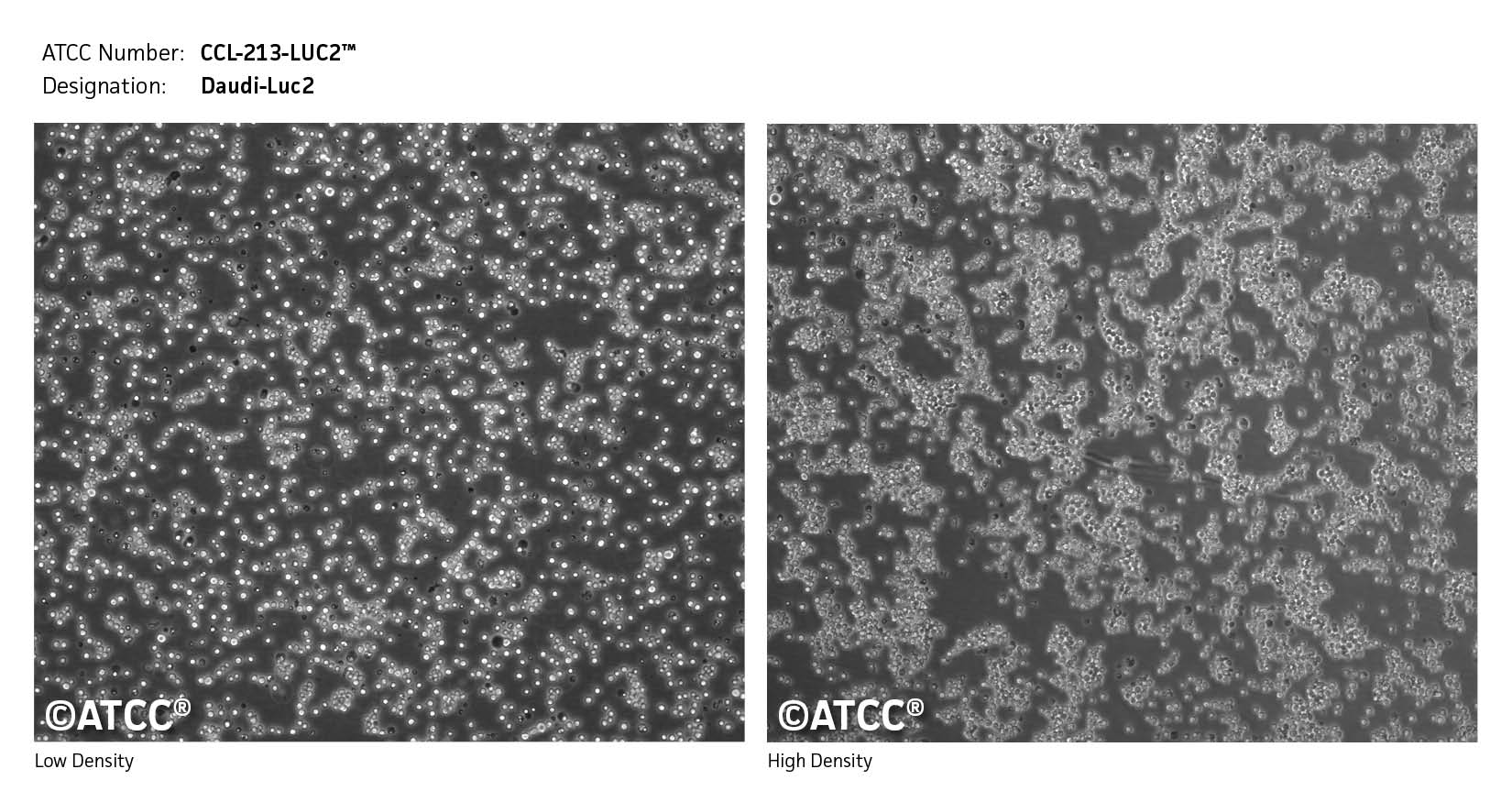Daudi-Luc2
CCL-213-LUC2 ™
Explore our dataDaudi-Luc2 CAR-T Target Luciferase Reporter Cells can be used as a target cancer cell for in vitro killing assay by CD20 CAR-T cells (tested at ATCC) and is expected to also work for CD19 CAR-T cells. Daudi-Luc2 has been verified to express high levels of CD20.
Use Promo Code ATCC-000052 at checkout to save 10% off this product.
This offer is effective until December 31, 2025. The 10% discount applies only to this product and select reporter-labeled cell lines; all other items are excluded from this promotion. The promo code must be applied in the “Promotional code” field in the shopping cart. Void where prohibited. Restrictions may apply.


